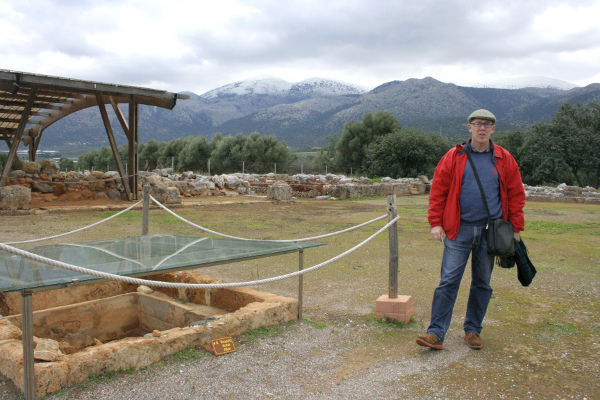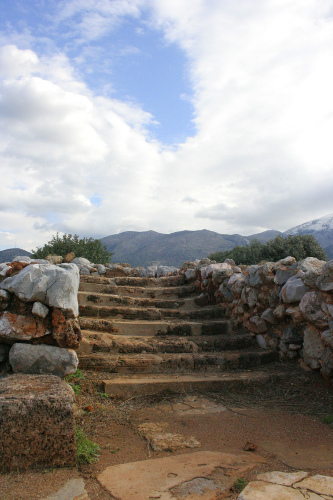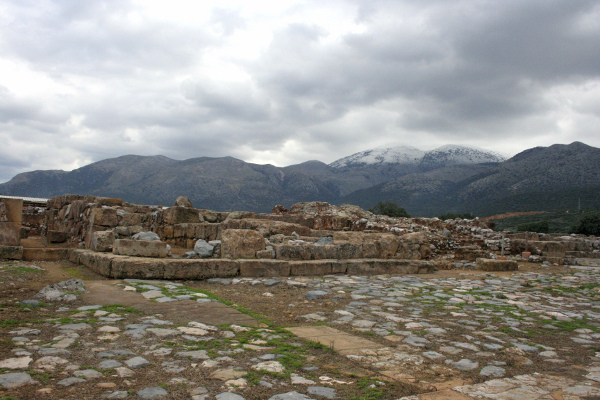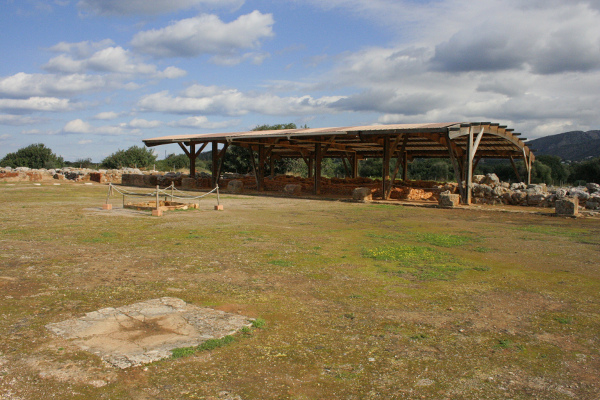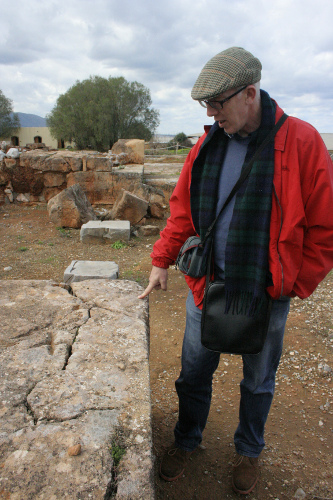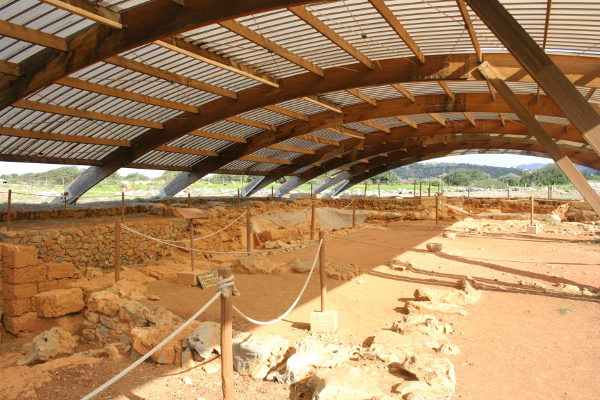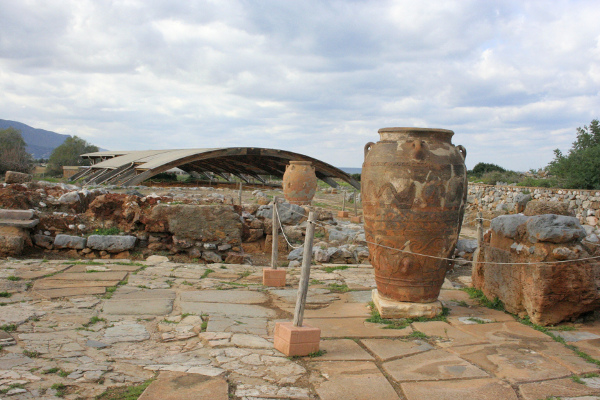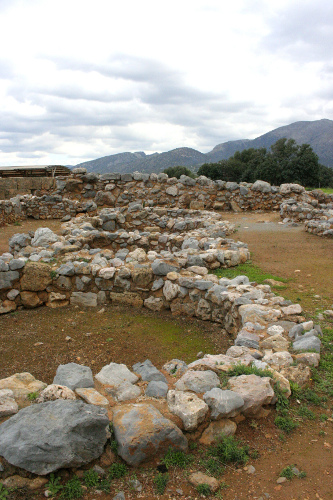Malia
Minoan Crete was the first area in both the Aegean and Europe which both developed and used a system of writing, a fact which demonstrates proof of a high level of civilization. The earliest “Cretan Hieroglyphic” signs appear at the end of the 3rd Millennium and come from the cemetery of Fourni at Archanes. Later on, approximately at the start of the Second Millennium, the script develops and becomes more systematic in order to serve the needs of the complicated bureaucratic system of the First Minoan Palaces.
In the beginning of the New Palace period there is also a second system of syllabic writing, Linear A, which is also used along with the “Cretan Hieroglyphic” Script. Both scripts were invented by the Minoans in order to record their language, which remains unknown, since the scripts have not yet been deciphered. Documents in both the “Cretan Hieroglyphic” and Linear A Script were found in the same archive, a fact which demonstrates that the two scripts co-existed during the Old Palace Period, in the New Palace Period however Linear A dominates. Most of the texts in Linear A, mainly on clay tablets from Central and Eastern Crete, date from the LMIB period.
With the establishment of the Mycenaean dynasty at Knossos after the destruction of the new palaces in Crete, the Linear B Script comes into use. The Linear B Script is a development of the Linear A Script and records the Hellenic language, which was spoken by the Mycenaean Greeks. The Linear B Script was deciphered in 1952 by the English architect Michael Ventris. The majority of the preserved inscriptions in the “Cretan Hieroglyphic”, Linear A and Linear B Scripts are economic documents.
Within the Prefecture of Heraklion in Central Crete are to be found the three main Palaces of Minoan Crete, Knossos, Phaistos and Malia. Knossos, the Palace of Minos and the largest and most important of Minoan Crete, has produced inscriptions in Mycenaean Linear B as well as Minoan “Cretan Hieroglyphics” and Linear A. Phaistos the Palace of Rhadamanthys and the second in size, has produced inscriptions in Minoan “Cretan Hieroglyphics” and Linear A as well as the ‘infamous’ Phaistos Disk. While Malia, the Palace of Sarpedon and the third in size, has produced inscriptions in Mycenaean Linear B (painted on Inscribed Stirrup Jars), Minoan Linear A and “Cretan Hieroglyphic”, as well as the inscription on the Malia Stone Block.

